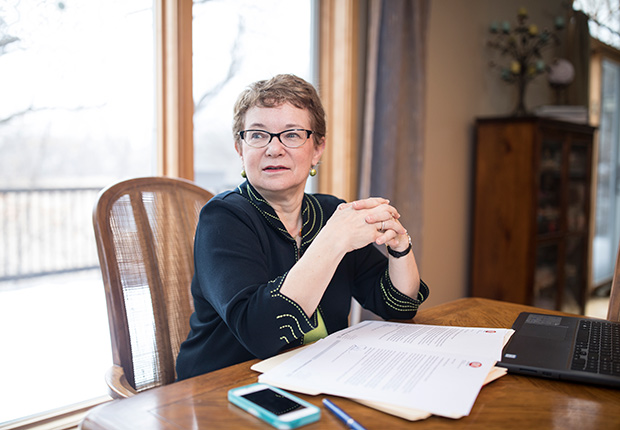AARP Hearing Center

By Mary Van Beusekom
When attorney Julie Wingert, of Eden Prairie, left a full-time job at 56, she found it was not easy to reenter the workforce. With 20 years of experience, she was told repeatedly by firms that she wasn’t suited for their full-time positions.
“I would get responses like ‘You have so much experience. You probably wouldn’t be happy here,’” she said.
Wingert, now 59, took legal temp jobs while she searched for a full-time position. “I was told by some professionals to take off all the experience except for the most recent 10 years and make sure not to put on the dates you graduated from college or law school,” she said.
After 2½ years, a recruiter and a job coach helped her find the position she was seeking.
Experiences like Wingert’s are one focus of a series of ongoing community conversations on Minnesota’s aging workforce, hosted by the Center for the Study of Politics and Governance at the University of Minnesota’s Humphrey School of Public Affairs. AARP Minnesota is also participating in the series.
“Courageous Conversations: Minnesota’s Aging Workforce,” moderated by Gary Eichten of Minnesota Public Radio, explores how to confront the challenges of an older population and work.
“The aging workforce is a topic that countless communities, families and employers are wrestling with,” said Kate Cimino, assistant director for the center.
Sponsored by the McKnight Foundation, the series connects employers, legislators, community members and providers of aging services to address issues such as a declining workforce and age discrimination. The first conversation drew about 60 people to the Humphrey School.
According to the state, the number of Minnesotans 65 and older will nearly double by 2030, to about 1.3 million, from 683,000 in 2010.
The repercussions of retirements will be felt in all sectors. In transportation and warehousing, workers 55 and older hold more than 30 percent of the positions.
“Some of the industries, particularly manufacturing, warehousing and transportation, are seeing stark projections about half of their workforce being eligible for retirement in the near future,” Cimino said. “The fear is that either these companies will be unable to operate at the same level or that they would need to shut down.”
Finding ways to adapt
A declining labor pool, Cimino said, may require employers to adapt jobs or offer flexible work schedules, phased retirement or different pay structures. Employers will also need to be more open to hiring workers 55 and older.
Employers often believe older employees will not work for long, not be as adept at learning new skills or cost more because of health care and retirement, said Erin Parrish, advocacy and outreach director at AARP Minnesota.
“But there’s research showing they don’t cost that much more and that the cost may even be offset by their strong engagement, work ethic, maturity and their lower likelihood of leaving unexpectedly,” Parrish said.
Cimino said that age discrimination is often very subtle, with applicants being told that they are over-qualified or not a good fit for the job. “With people living longer, we need to do away with the stereotype that, at age 62, you’re just done,” she said. “We need some real awareness and attention to solutions on keeping people happy and productive for as long as they can be.”
Five more conversations will be scheduled in Minnesota through the spring of 2019. The next will be March 23 at 10:30 a.m. at the YMCA in Marshall. To get more information or to register for an event, call 612-625-8330 or email cspg@umn.edu with “Courageous Convos” in the subject line.
Mary Van Beusekom is a writer living in Excelsior, Minn.































































